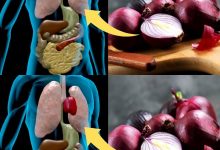Heating plastic in the microwave is a common and simple activity but can be harmful if we don’t use the right material.
The debate is wide-ranging and full of arguments for and against the use of microwaves. There are some who argue that, with the right plastic and knowing the properties of the food, it’s harmless, as stated by the World Health Organization (WHO).
In this article, discover which plastics are suitable and the risks when using the microwave.
What types of plastic are there?
We classify plastics as natural or synthetic. Synthetics include thermoplastics, thermosets, and elastomers. According to the established coding, they’re identified by a three arrow triangle recycling symbol.

This is the international symbol for recycling and, inside it, you’ll find a number from 1 to 7:
- PET (polyethylene terephthalate): Has many properties, such as transparency and dye acceptance. It’s strong, lightweight, and easy to recycle. Many manufacturers use it for packaging beverages.
- HDPE (high-density polyethylene): Flexible, but with some stiffness. It resists chemical impacts and high and low temperatures. It’s colorless, almost opaque, and easy to print, paint, or glue on. It’s commonly used in packaging for food, cleaning products, or motor oil.
- PVC (polyvinyl chloride): This is a very flexible and transparent plastic that many companies use in bags, laboratory containers, or frozen food. It can be recycled into containers, waste garbage cans, and pipes.
- LDPE (low-density polyethylene): This plastic has low recycling possibilities and is the least used in the food chain due to its ease of releasing toxins. It’s resistant to acids. Due to its hardness, it’s used for pipes, plumbing, medical equipment, detergent bottles, and other applications.
- PP (polypropylene): Also tough, thermally stable, and easy to mold and color. We see it in bottle caps, lunch boxes, and diapers. It resists chemical agents, boiling water, and detergents. It’s the only one that the World Health Organization recommends for contact with food.
- PS (polystyrene): We know this as plastic glass. It’s hard and is used in food, toys, and laboratories.
- Others (mixed plastic): A product that is difficult to recycle and that consists of several materials. We can find it in countless objects, such as baby bottles, sippy cups, medical containers, car parts, and compact discs.
The triangle with the connecting arrows in the recycling symbol and, for plastics, indicates that they’re suitable for recycling.
Which ones are microwave safe?

Following the regulations and identification codes, microwave-safe containers have the numbers 1, 2, and 5. Or they have the inscription “microwave safe”. Only these have a design that’s okay to use in the microwave without altering their physicochemical stability and without toxic migration of particles.
You should practice caution with baby bottles, as manufacturers have made them out of polycarbonate for decades. This material releases bisphenol-A, an endocrine disruptor, in the microwave. There’s currently a ban on its manufacture and companies are replacing it with polypropylene or polyethersulfone, which is safe to heat in the microwave. However, you should still check the product label to confirm that they’re BPA-free.
As you can see, there’s an abundant variety of plastics and, at home, we tend to reuse them. In fact, we tend to take containers and use them to store food or drinks even though they weren’t designed for that purpose, or at least not in a durable way. And in the same way, we think that, because they’re plastic, we can heat them momentarily in the microwave.
What are the risks?

Far from being inert, certain plastics release dioxins, poisonous, and carcinogenic substances when we subject them to heat or cold. They pass into foodstuffs in a chemical process known as migration.
Although some analyses estimate that the migration process is overestimated, there’s a mixture of scientific arguments that call for caution. Let’s look at some examples:
If the package has the number 7, it means that it contains bisphenol. In large quantities, it can be harmful to the body. It is an exogenous substance that, according to research, can contribute to obesity, endocrine alterations, and chronic degenerative diseases.
Those bearing the number 3 and the acronym PVC contain phthalates, chemical compounds used as plasticizers, and are harmful to health.
Never heat food in the microwave in plastics with the numbers 4 or PVC (polyvinyl chloride) or 6 or PS (polystyrene).
Another study revealed that a high percentage of people who frequently use the microwave don’t know the right plastics to use. And worse, they use any packaging and overheat the food. This increases the possibility of the migration of foreign substances from the surface of the material to the food.
What’s more, living and working patterns that promote overheating of high-fat foods only make the problem greater. In fact, migration increases when we heat products with these characteristics and extend contact time.
Other options for not heating plastic in microwave ovens

If you don’t have microwave-safe plastic, you can use glass or ceramics that will withstand the temperatures of heating food without any problem. In fact, if it’s only for a few seconds, resorting to paper or cardboard, preferably white, will not pose any risk.
Among the best options are those silicone and pyrex glass, which you can use both microwaves and conventional ovens.
You should never put metal in the microwave. However, nowadays, according to manufacturers’ recommendations, aluminum foil is permissible. You can even find microwave-safe aluminum foil containers available on the market.
Technological development allows us to have, at the present time, materials other than plastic that we can use in the microwave.
To heat plastic in the microwave, check the qualifications of the container
We recommend using the containers that manufacturers have declared safe for heating in the microwave. According to standards, manufacturers must indicate the specifications of the type of plastic on containers. So, it’s up to us to know and handle the information well.
On the other hand, if you have difficulties in recognizing the plastic that can safely go in the oven, you should opt for glass or ceramic as a precaution.
You also need to determine whether you need to cook food or simply heat it up. For the latter, the time is shorter. So, whether it’s plastic or glass, exposure won’t be a problem.
That’s not the same when it comes to cooking. In this case, never microwave without a container that clearly indicates that it’s safe to use in the microwave. Also, avoid containers that have been deformed or are very worn, as they’re more prone to release chemicals.







